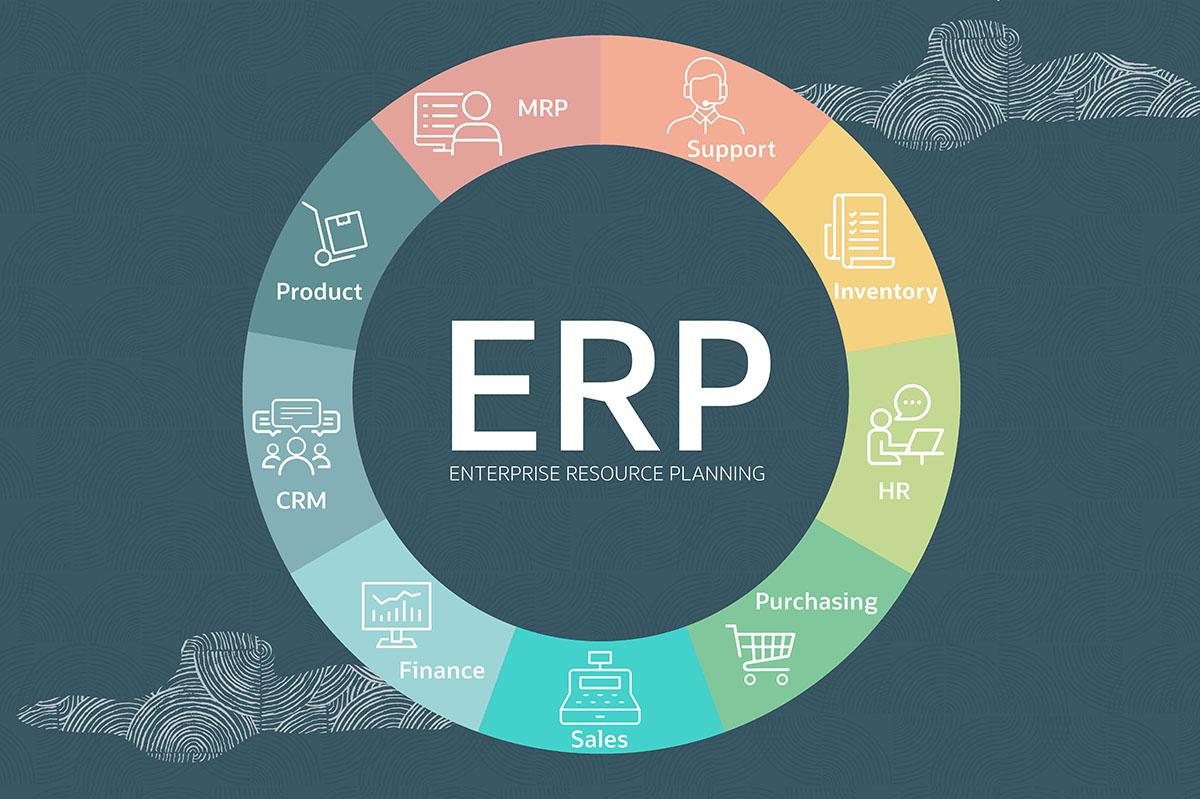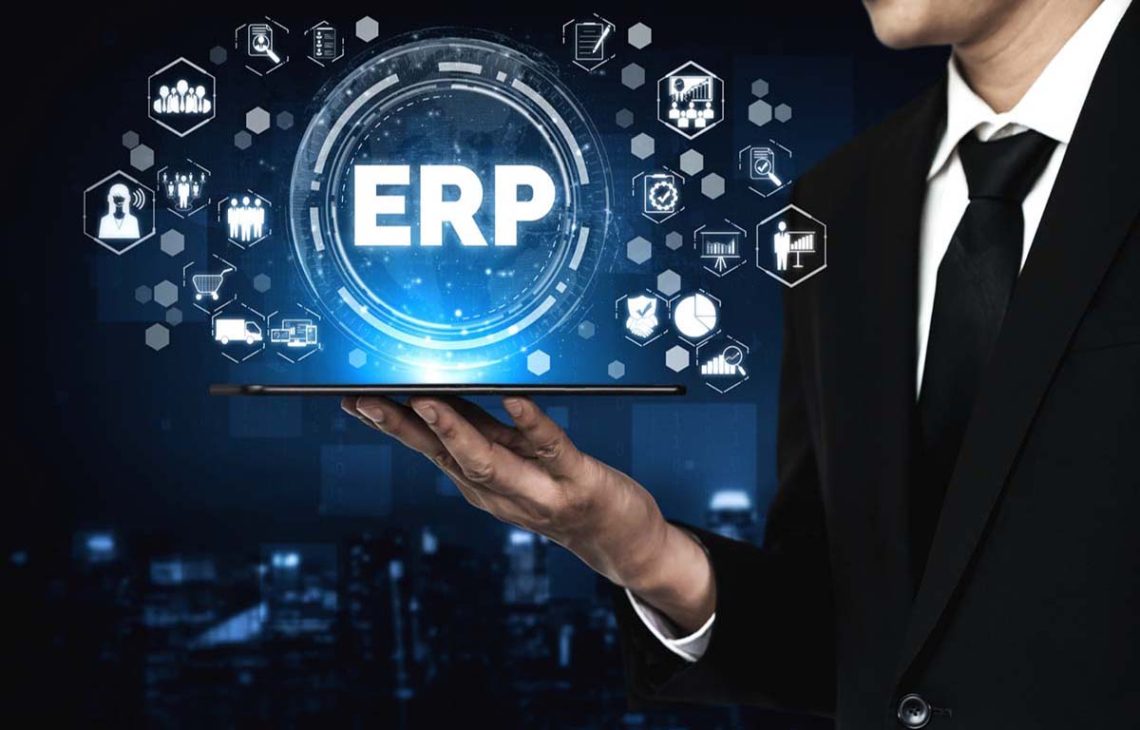The Power of Enterprise Resource Planning (ERP)
In the dynamic realm of modern business, Enterprise Resource Planning (ERP) stands as a pivotal platform reshaping the way companies manage and integrate essential components of their operations. This article explores the fundamental aspects of ERP, its functionalities, implementation, benefits, weaknesses, notable solutions providers, real-world examples, and the growing significance of ERP in fostering organizational efficiency.

Understanding Enterprise Resource Planning (ERP): An Integrative Force
ERP serves as a comprehensive solution enabling companies to seamlessly manage and integrate diverse business processes within a single system. It acts as a unifying force, eliminating the silos that often result from individual departmental systems. Think of ERP as the cohesive glue that binds together the various facets of a large organization, streamlining operations and fostering cross-departmental collaboration.
What Does ERP Do? Unveiling Integration and Communication
At its core, ERP facilitates the integration of planning, inventory management, sales, marketing, finance, and human resources. Rather than each department operating within its optimized system, ERP provides a unified application and interface for accessing all systems. This not only enhances efficiency but also promotes communication and information sharing among different departments.
ERP applications play a crucial role in making information about various divisions accessible throughout the company. By collecting data on the activity and state of different sectors, ERP ensures that valuable insights are available where they can be utilized most productively.
How Does It Work? Evolution from On-Premise to Cloud-Based Solutions
The evolution of ERP has seen a transition from traditional on-premise models, relying on physical client servers and manual entry systems, to contemporary cloud-based solutions offering remote, web-based access. In the current landscape, companies typically rent services from ERP platform providers, selecting the applications relevant to their needs.
Upon application selection, the hosting company loads these onto the server rented by the client, initiating the integration of the client’s processes and data into the ERP platform. Once all departments are seamlessly tied into the system, data is collected on a centralized server, instantly available to authorized users. The result is streamlined reporting with metrics, graphs, and visuals providing insights into the performance of the business and its departments.
Benefits of Enterprise Resource Planning: A Multifaceted Impact
Businesses turn to ERP for a myriad of reasons, each seeking specific benefits tailored to their goals. Some overarching advantages include:
1. Improves Accuracy and Productivity:
Integration and automation of business processes eliminate redundancies, enhancing accuracy and productivity. Interconnected departments synchronize work for faster and more efficient outcomes.
2. Improves Reporting:
Enhanced real-time data reporting from a single source system aids in planning, budgeting, forecasting, and effectively communicating the state of operations to stakeholders.
3. Increases Efficiency:
Quick access to information for clients, vendors, and business partners contributes to improved customer and employee satisfaction, quicker response rates, and decreased operational costs.
4. Increases Collaboration:
ERP fosters collaboration among departments, creating a synergized workforce that improves productivity and employee satisfaction. Manual tasks are replaced, allowing employees to allocate time to more meaningful work.
ERP Weaknesses: Overcoming Implementation Challenges
While ERP presents numerous benefits, it’s not a one-size-fits-all solution and comes with its set of challenges. Some common weaknesses include:
1. Doesn’t Eliminate Inefficiencies:
ERP systems may not eradicate inefficiencies or improve all aspects of a business. Organizations might need to reorganize and adapt to prevent compatibility issues.
2. Risk of Cost Overruns:
Implementing ERP systems requires careful planning to avoid cost overruns. Misalignment with organizational processes or reluctance to abandon old working methods can lead to inefficiencies and increased expenses.
3. Reluctance to Change:
ERP projects can face resistance if a company is unwilling to abandon old software or working processes. Change management principles play a crucial role in ensuring successful implementation.
ERP Solutions Providers: Leaders in the Industry
Several industry giants dominate the ERP software landscape. Oracle, initially renowned for its relational database, expanded its presence in the ERP domain. SAP, a stalwart in enterprise software, collaborated with Oracle before establishing itself as a leading ERP solution provider. Microsoft, a longstanding industry leader, offers a diverse array of software applications.
As cloud-based solutions gain prominence, newer entrants like Bizowie and Workwise are challenging traditional ERP leaders, contributing to the evolution of the ERP landscape.
Real-World ERP Examples: Transformative Success Stories
1. Fulton & Roark:
This men’s grooming product manufacturer successfully implemented Oracle NetSuite ERP to streamline inventory and financial data tracking. The ERP system immediately identified accounting errors, eliminated third-party costs, and enhanced financial reporting.
2. Cadbury:
The global confectioner Cadbury implemented an ERP system to integrate thousands of applications, standardize processes, and restructure warehouse management. This transformation facilitated seamless coordination, breaking down silos and supporting rapid growth.
The Importance of Enterprise Resource Planning: A Strategic Imperative
ERP software’s significance lies in its ability to offer single-system solutions, fostering collaboration and interaction within a unified interface. By eliminating operational silos, ERP enhances productivity, efficiency, and communication, ensuring that organizations can adapt to the complexities of modern business.
Components and Types of ERP: Tailoring Solutions to Organizational Needs
The components of an ERP system vary based on organizational needs but commonly include finance, human resources, logistics and manufacturing, supply chain management, and customer relationship management. Businesses can choose from deployment options such as cloud-based, on-premise, or a hybrid model, tailoring ERP systems to their unique requirements.
Fortifying Organizational Structures for the Future
In conclusion, Enterprise Resource Planning is more than just a technological solution; it’s a strategic imperative for businesses navigating the intricacies of the modern corporate landscape. As technology continues to advance, ERP systems will likely evolve further, providing increasingly sophisticated insights to safeguard financial stability. Embracing the rigorous practice of ERP is not just a compliance necessity but a proactive step toward fortifying organizational structures for the future. The integration of systems, collaboration among departments, and the enhanced visibility offered by ERP are instrumental in shaping the success stories of businesses in the digital age.






